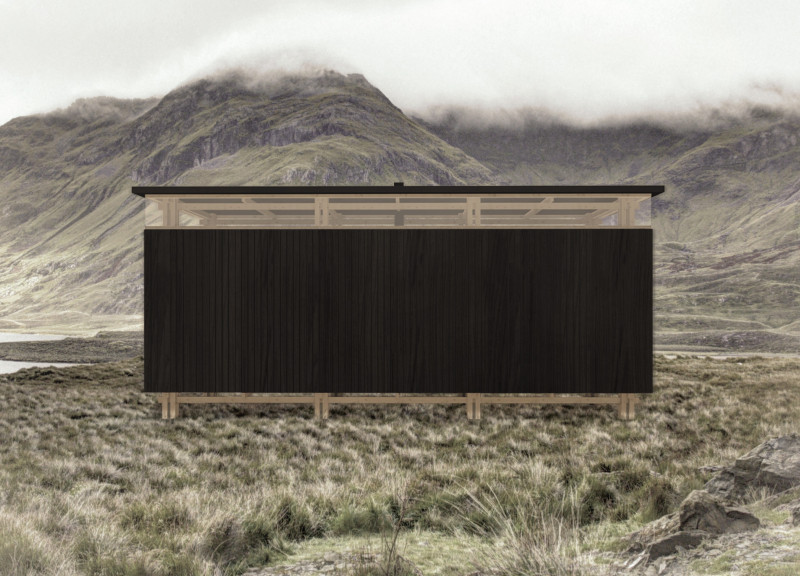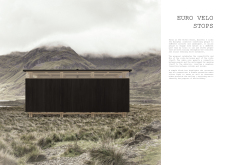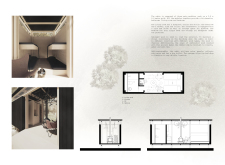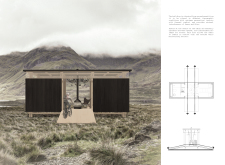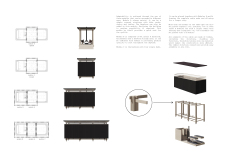5 key facts about this project
The Eurovelo 6 Cabin is located along The Rivers Route, which connects ten European countries. It serves as a rest stop for cyclists and local visitors, designed to encourage engagement with the surrounding nature. The concept emphasizes flexibility, allowing the cabin to adapt to various visitor needs while also fostering a sense of community.
Modular Design
The cabin is structured into three main modules: a living room, kitchenette, bathroom, and bedroom. Each module plays a different role in supporting users during their travels. The living room includes a fireplace, creating a welcoming space for relaxation. The kitchenette is equipped with basic facilities like a sink and stove for simple meal preparation. The bathroom offers essential fixtures for personal hygiene while the bedroom can accommodate four single beds, with storage space for personal items designed below.
Environmental Integration
An important feature of the cabin is its elevation above ground. This design allows it to adapt to changing landscape conditions and reduces its impact on the site. Keeping it elevated also improves thermal comfort and minimizes disruptions to local plant and animal life. The cabin includes operable panels that can function as ramps, allowing easy access for everyone while promoting interaction with the outdoor environment.
Material Performance
Salvaged wood is used for the cabin's exterior cladding, supporting sustainable practices and providing a consistent look across different locations. The wood undergoes a charring process, which increases its durability against weather conditions and pests. This choice not only enhances the building's longevity but also ties its appearance to its functional needs, highlighting both performance and aesthetics.
Self-Sufficiency
The cabin incorporates various self-sustaining features, such as solar panels for energy and a rainwater collection system, enabling it to operate independently in its natural setting. The inclusion of a dry toilet solution adds to its self-sufficiency, making it practical for visitors. These elements work together to support the needs of users while highlighting the importance of living in harmony with the environment.
Large windows frame views of the surrounding landscape, allowing natural light to fill the interior spaces. This design helps connect occupants with nature, enhancing their experience while using the cabin.


